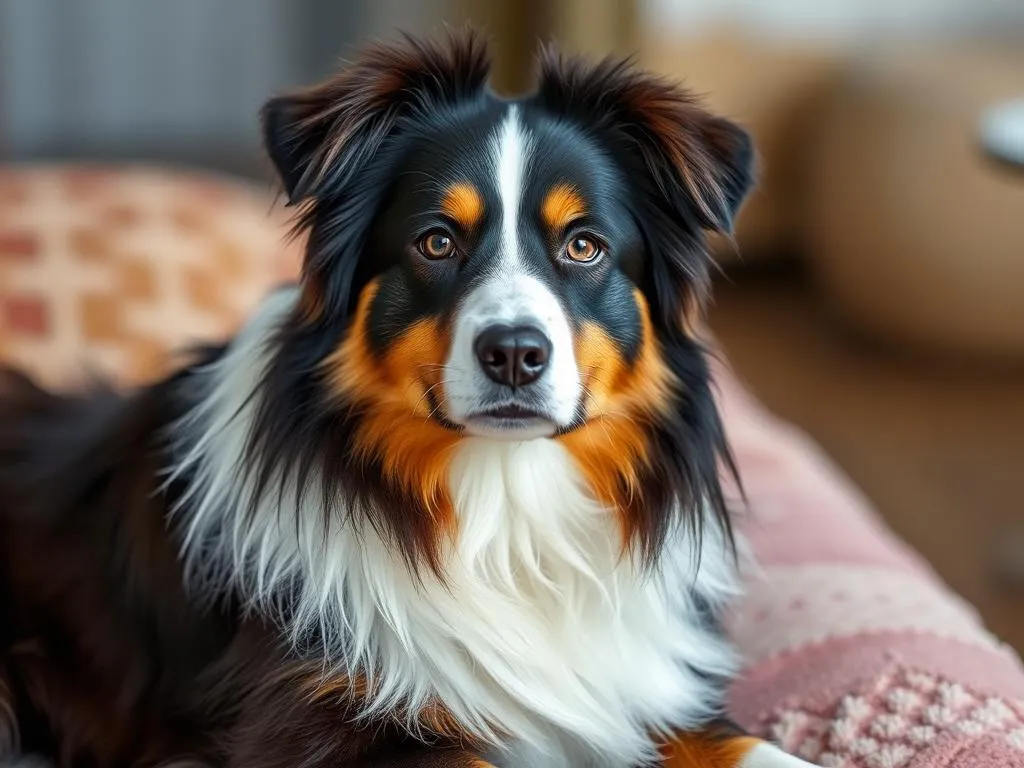
Introduction
When considering a new pet, one of the most common concerns for allergy sufferers is whether the breed in question is hypoallergenic. In simple terms, a hypoallergenic dog breed produces fewer allergens, which can help minimize allergic reactions in sensitive individuals.
The Australian Shepherd, often known for its intelligence, agility, and vibrant personality, is a favorite among dog lovers. With their striking coat colors and lively demeanor, these dogs are not only beautiful but also highly trainable and suitable for active families. However, for those who experience allergies, the question remains: are Australian Shepherds hypoallergenic?
This article will delve into the characteristics of Australian Shepherds, explore their grooming needs, and ultimately determine whether they are a suitable choice for allergy sufferers.
Understanding Hypoallergenic Dogs
What Makes a Dog Hypoallergenic?
Hypoallergenic dogs are often described as breeds that produce fewer allergens, which are typically found in dog dander, saliva, and urine. The main allergens that affect humans are proteins found in these substances. When a dog sheds its fur or skin, these proteins are released into the environment, potentially triggering allergic reactions.
Several factors can influence a dog’s hypoallergenic status, including:
- Coat Type: Dogs with hair instead of fur, such as Poodles, tend to shed less dander and hair.
- Dander Production: Some breeds naturally produce less dander than others.
- Saliva and Urine: The composition of a dog’s saliva and urine can vary between breeds, affecting allergen levels.
Common Hypoallergenic Breeds
Here are some popular hypoallergenic dog breeds:
- Poodle: Available in standard, miniature, and toy sizes, they have a curly coat that traps dander and hair.
- Bichon Frise: These small, fluffy dogs have a soft coat that requires regular grooming, helping to minimize allergens.
- Portuguese Water Dog: Their wavy coat is less likely to shed dander into the environment.
- Schnauzer: Available in various sizes, Schnauzers have a wiry coat that also helps keep allergens contained.
Comparing these breeds to the Australian Shepherd, we find that Australian Shepherds have a different coat type and grooming needs, which may impact their hypoallergenic status.
Australian Shepherds: Characteristics and Grooming Needs
Physical Traits
Australian Shepherds sport a double coat made up of a soft undercoat and a longer, water-resistant topcoat. This unique structure helps them withstand various weather conditions, but it also means they shed considerably, especially during seasonal changes.
- Coat Texture: Their fur can be straight or wavy, and it often comes in a variety of colors and patterns, including merle, black, red, and blue.
- Shedding Patterns: Typically, Australian Shepherds shed moderately year-round, with increased shedding in the spring and fall as they “blow” their coat.
Behavioral Traits
In addition to their physical traits, Australian Shepherds are known for their high energy levels and intelligence. They are playful, affectionate, and make excellent companions for active families. However, their exuberance can be overwhelming for someone with allergies, particularly if they are prone to reactions.
Grooming Requirements
To manage their coat and minimize allergens, Australian Shepherds require regular grooming:
- Frequency: It’s recommended to brush them at least once a week, and more often during shedding seasons.
- Bathing: Regular baths can help reduce dander and odors. Use a gentle, hypoallergenic shampoo to avoid irritating their skin.
- Tools and Products: Essential grooming tools include a slicker brush, de-shedding tool, and an undercoat rake.
Allergies and Dog Ownership
Understanding Dog Allergies
Dog allergies primarily stem from exposure to proteins found in dander, saliva, and urine. Common symptoms of dog allergies in humans may include:
- Sneezing
- Nasal congestion
- Itchy or watery eyes
- Skin rashes or hives
Assessing Your Allergy Potential
For those considering bringing an Australian Shepherd into their home, it’s crucial to gauge your potential for allergies. Here are some tips:
- Spend Time with the Breed: Before making a commitment, spend time with Australian Shepherds to see how your body reacts.
- Consult an Allergist: An allergist can conduct tests to determine your specific sensitivities, providing insight into whether a dog could trigger allergies.
Are Australian Shepherds Hypoallergenic?
Shedding and Dander Production
Given their double coat, Australian Shepherds do shed a notable amount of fur and dander. Research indicates that they produce higher levels of dander compared to breeds classified as hypoallergenic. Thus, they may not be the best choice for someone with severe allergies.
Personal Experiences of Owners
Many Australian Shepherd owners report mixed experiences when it comes to allergies. Some allergy sufferers manage well with regular grooming and cleaning, while others find it challenging.
- Testimonial Example: One owner shared that despite their allergies, they found their Australian Shepherd’s presence comforting and manageable with diligent cleaning practices.
- Veterinarian Insight: A veterinarian noted that while Australian Shepherds can trigger allergies, careful management may allow allergy sufferers to coexist with the breed.
Comparisons with Other Breeds
When compared to breeds specifically known for being hypoallergenic, such as Poodles or Bichon Frises, Australian Shepherds fall short in terms of allergen reduction. Their shedding patterns and dander production make them less suitable for allergy sufferers.
Tips for Allergy Sufferers Considering an Australian Shepherd
Pre-Ownership Considerations
Before deciding to adopt an Australian Shepherd, consider the following:
- Allergy Testing: Consult with an allergist for testing to understand your sensitivities better.
- Selecting the Right Dog: Each dog has a unique temperament, so spend time with different Australian Shepherds to find one that fits your lifestyle.
Home Preparation
Creating an allergy-friendly environment can help mitigate symptoms:
- Air Purifiers: Invest in HEPA air purifiers to filter out allergens.
- Cleaning Routines: Regularly vacuum and clean surfaces to reduce dander accumulation.
- Pet-Free Zones: Designate areas of the house, such as bedrooms, where pets are not allowed.
Ongoing Care and Management
To minimize allergens in your home after bringing an Australian Shepherd home, follow these best practices:
- Grooming: Maintain a consistent grooming schedule to control shedding and dander.
- Diet Considerations: A healthy diet can promote a better coat and reduce shedding. Consult your veterinarian for dietary advice that may alleviate allergy symptoms.
- Regular Veterinary Check-Ups: Keep up with vet visits to monitor your dog’s health and skin condition, which can impact dander production.
Conclusion
In summary, while Australian Shepherds are beloved for their intelligence and playful nature, they are not classified as hypoallergenic. Their shedding patterns and dander production can pose challenges for allergy sufferers. Each individual’s experience with allergies can vary significantly, so it’s essential to consider personal sensitivities and household management before bringing an Australian Shepherd into your home.
Ultimately, the decision to adopt a dog should align with your lifestyle and health needs. If you are determined to have an Australian Shepherd, proactive measures can help create a comfortable living environment for both you and your new furry friend.









